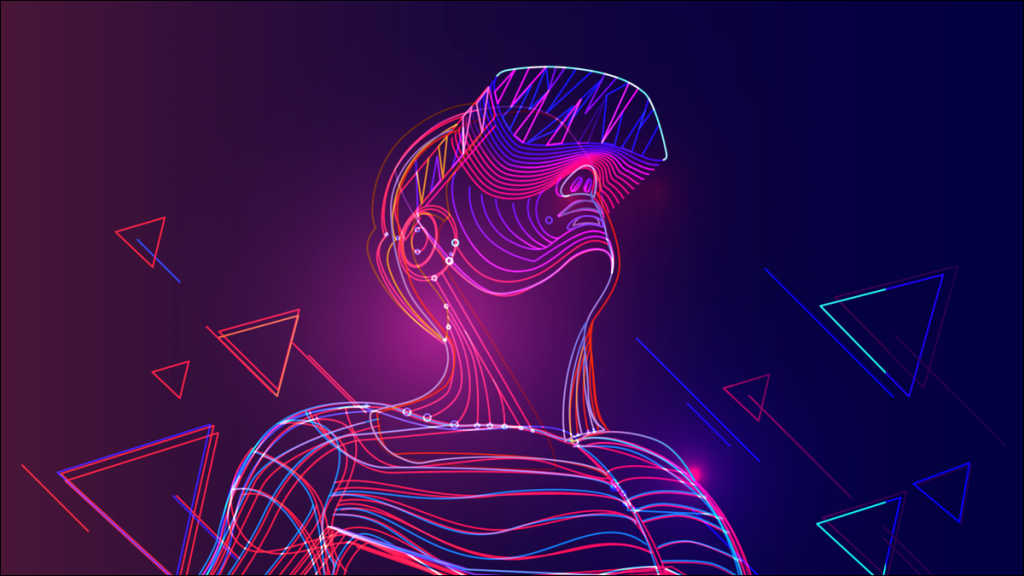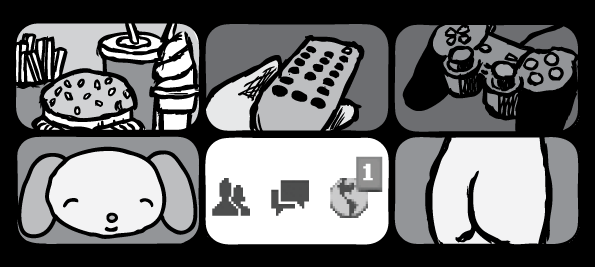During a livestream on October 28th 2021, Mark Zuckerberg revealed that the parent company of Facebook, Instagram and Whatsapp among others had rebranded itself to Meta. He described the new company vision as a focus to bring the so-called “metaverse” to life and help people connect, find communities and grow businesses. This development is understood to become an expansion of online social experiences as we know them today into three dimensions and projections in the physical world using augmented reality. If we were to speculate what the future holds for us, we can see how the metaverse is a place where every aspect of our daily lives comes together in the virtual world. We’re able to interact and meet with each other in multi-dimensional virtual spaces, maintain our lives thanks to online currencies and keep ourselves entertained with digital forms of art and culture. What’s not to love about life in the virtual world?

Frankly, there’s quite some reason to be sceptical about the growing presence of the virtual in the physical world, and vice versa. Some experts even go as far as saying that the turning point, when more time is spent in the digital world than in reality, will not be good for humanity. This isn’t just some dystopian future we’re moving towards, since it’s already happening in several aspects of our daily lives. Social media platforms, productivity apps and video games are already widely present in our society, and their shared characteristic is that artificial intelligence (AI) tools are used to take a hold of your attention in order to spend as much time of your day virtually as possible. A recent survey showed how 40 percent of U.S. internet users aged 18 to 22 years reported the feeling of being addicted to social media. Similar statistics can be found for video game addiction, which wasn’t even considered as a psychological disorder by the World Health Organization (WHO) up until recently.
Given the rising popularity of spending time in the virtual world, it is to be expected that the share of people suffering from addiction to said virtual world will grow as well. Unfortunately enough, the serious consequences of such addictions are still underestimated by most internet users. This article has a focus on explaining how the virtual world stimulates addiction, and why every individual who interacts with virtual environments should consider maintaining a digital diet.
Superstimuli
Let’s start with one of the most significant causes where patterns of digital addiction come to life. Supernormal stimuli (or superstimuli), first noticed by Niko Tinbergen, are extreme versions of stimuli that move us to generally beneficial behaviour. Smiling faces and sounds of laughter can be stimuli for social behaviour, and the sight of food being cooked is a stimulus for our hunger and resource-gathering behaviour. Stimuli have been ingrained in our functioning through the benefits they bestow by moving us onto certain behaviour. Stimuli however, arise from the natural primitive situations we have been living in for the majority of time.
The modern age brings with it the advent of superstimuli: stronger versions of stimuli eliciting a stronger response and more attention from our part. These superstimuli might entice people to certain extents that destructive behaviours arise such as porn addiction or fast-food addiction. Fast food is often equated to being a superstimulus to the benefit that eating sugar and fat gave in pre-modern times. The stimulus and attractiveness that fast-food gives, comes through hooking into our brain-mechanisms that are predisposed to ingesting high-calorie foods. Eating these foods was beneficial in times wherein food was scarce, but in times wherein food is abundant, eating foods like these actually has adverse effects on our health. Superstimuli on the online web are exaggerated digital versions of real-life stimuli, and are conveniently and easily accessible. Examples of which are videos on YouTube, condensed social information on social networks and online pornography.

Digital superstimuli should be treated with caution for several reasons. First, the strength of the stimulus combined with the ease of access pulls users towards engaging with this stimulus, instead of engaging with similar natural stimuli in real-life. While this is not bad in its definition, real-life social stimuli are often accompanied by a healthy amount of mental and physical effort required to obtain these stimuli. Missing out on the healthy effort of attaining the stimuli weakens our ability to perform the efforts for these stimuli. For example, if we could make ourselves slim and muscular with the click of a button, the majority of people would do it. However, we would miss out on investing the required effort to attain this benefit, decreasing our discipline and willpower and even some of the long-term satisfaction since we did not really invest effort to attain the result.
Second, besides the absence of effort, discipline and partly satisfaction, the availability of digital superstimuli can cause overstimulation to parts of the brain that respond to these stimuli. Since our brains are notably versatile in their change to circumstances, the neurotransmitters mediating the experience of the stimulation in our brain will become less sensitive to the stimulation under continuous overstimulation. For example, several different digital activities have been shown to decrease dopamine release over a longer time due to overstimulation. The brain adapts to the stimulation. Not only does this desensitisation as it is called normalise the experience of the superstimulus also does it turn normal (mostly real-life) stimuli less exciting and more bland. A lot of pain causes pain to be less painful while a lot of pleasure and desire cause our real-life pleasures and desires to be less intense.
Conditioning
Superstimuli are not the only addictive and possibly disadvantageous psychological elements of the digital experience. The digital age and increasing digitisation of our lives brings with it increasingly efficient digital experiences, designed to make users engage with a product as much as possible. Content feeds and personalized recommendations attempt to achieve maximum engagement with the product on the end of the user not necessarily by the mechanisms of superstimuli, but by other mechanisms like conditioning.
The addictiveness of feeds is generally traced back to the psychological concept of conditioning. While several strands of conditioning theory exist, the core principle underlying most conditioning theories is that a conditional stimulus is given together with an unconditional stimulus. In social feeds, the unconditional stimulus might be the feeling we get when we see something interesting or enticing. Initially scrolling itself does not provide any particular excitation of our brain, but since the scrolling often leads to the previously mentioned unconditional stimulus, we get conditioned to experience this stimulus for the scrolling behaviour.
As the reward was received for seeing some items, and these items were always attained by scrolling, we start to associate the scrolling with the reward of seeing something nice or interesting. Having learned to associate the scrolling with the reward, the scrolling now becomes a conditioned stimulus where we experience the reward for the scrolling instead of the item itself. We need not receive a reward every time, when scrolling sometimes leads to the reward item we will start scrolling more and more, in the same way an occasional prize at a slot machine entices us to engage with the machine more frequently.

The power of feeds can be even stronger than the power of slot machines, since feeds do not require any money to scroll and since they are personalised and constantly changing to condition you as a person as much as possible. Conditioning by itself or conditioning by feeds is not bad in itself. Nevertheless, would most of us consider the endless hours spent in feeds as wasted time in the end. We still keep engaging with these feeds. The future virtual counterparts of these feeds (an endless sequence of events occurring or other conceptual counterparts) may be even more immersive and even stronger, leading to much more conditioning. Not only is time ‘wasted’ engaging with feeds, but our interaction with feeds is very passive and not goal-oriented in addition. We follow an autopilot program when scrolling through feeds, instead of actively thinking about purposes, setting out goals for ourselves and pursuing personal ambitions.
Harmful effects
Not only does the presence of frameworks such as superstimuli and conditioning result in direct consequences to one’s mental well-being, there are also possibly some serious long-term consequences that should be taken into account. One of the most directly noticeable effects of a virtual addiction is that of social anxiety, often accompanied by loneliness and isolation. Studies have presented evidence for a significant relationship between signs of an internet addiction and loneliness. A different study among university students in India found an incredibly high correlation between internet addiction and social anxiety. In addition, a study among college students in Japan presented how males are more likely to become addicted to video games, and thus more vulnerable for social isolation than females, who are more likely to become addicted to online social networks.
Besides harmful effects concerning social interaction, signs of depression and emotional instability may also arise from virtual addiction. Consequences like these are especially impactful for young adolescents interacting with the virtual world, given that their emotional states and hormones are still developing. Proof for this was given by a study among Chinese adolescents, where it was found that internet addiction holds direct associations with emotional and behavioural maladjustments, originating from depression and delinquency. Not only that, but another study among adolescents also found evidence that internet addiction can lead to emotional instability and difficulty to set out and achieve personal goals. Similar patterns were found regarding attention and concentration levels among students. On top of that, it has also been determined that risky decision making could be seen as an important behavioural characteristic of people suffering from an internet addiction.

Lastly, one of the worst possible outcomes that can result from a virtual addiction is that of a psychotic-like experience or disorder. Psychosis is a psychological condition characterised by abnormal thinking patterns and a loss of contact with reality. In the last decade, numerous case studies have shown the emergence of psychotic symptoms in the immediate period after stopping excessive internet use, such as paranoiac states and delusions. Cases of excessive video game addictions could even lead to full-blown psychotic episodes, involving violent exploits. Experts have already made the call for excessive internet use to be acknowledged as an essential part of psychopathology.
What can we do about it?
Of course, an argument could be made that people are free, independent, and trustworthy in making their own decisions on how to act as they wish. The virtual world is not completely an evil place of lust, sloth and despair. Our lives have actually been improved by quite a margin thanks to the virtual world, allowing much more options to discover and interact with the world than ever before. Especially so during times of lockdown in the Covid-19 pandemic, as many cases of depression from isolation were likely to have been prevented thanks to the opportunity of social interaction through virtual spaces. Yet still, as with any disorder (they are called that for a reason), we have to acknowledge that too much will always be too much. Time spent in the virtual world is no exception to this rule.
Overall, multiple occasions throughout history have proven how awareness from a societal perspective is required to make a significant change. At first, the stimulating item is scarce, later it becomes abundant and overstimulating, a trend starts to moderate the consumption of the item and in the final stage, semi-universal adoption of a healthy ‘diet’ of said item becomes the norm. Many healthy habits we have today stem from convictions that were once just health experiments, practised by few. Attempts at conscious healthy eating became more mainstream in the last century, when prolonged abundance of food made it apparent that unfettered intake of the most attractive food available would have adverse health benefits. Where it later became mainstream, it was initially practised by few, but later adopted by larger groups. The negative effects of smoking have only been realised by society fairly recently, in the second half of the previous century. Before that, smoking was commonplace and when people first realised it was bad, stopping smoking was still considered an infrequent trend rather than a commonplace activity. Later, this trend of quitting to smoke became a more common activity embraced by the broad public.
Interestingly enough, the digital detox (the process of diminishing or eliminating digital engagement) is a trend showing increasing popularity. With the increasing power of the virtual world, the disadvantages it brings together with its advantages will only serve to increase this trend of digital detox towards a more conscious digital lifestyle. Where at first digital stimuli were absent they later became abundant and stronger than natural stimuli. It is only wise and natural to move towards the next phase which consists of a conscious balanced digital diet.

From body-health awareness to brain-health awareness
The continuous integration of the virtual and the physical world is full of possibilities. Under the surface however, lurk dangers like desensitisation, passive conditioning, social isolation and delusional perception. Too much of something good eventually turns into something bad, and we humans have a particular disposition towards such behaviour. Many psychological addictions rise from resources that are initially scarcely available and in later times abundantly available and addicting. First, detoxing from the resource is simply a trend. Later, these abstention trends transform into commonplace aware ‘diets’ in interaction with the item. Today we need to think for ourselves what digital diet we want to feed our brain. Just like consciously eating healthy has become the norm rather than a trend for the body, we need to think about a conscious ‘diet’ for the brain and keep our brains active. Different brains react differently to digital diets, and making conscious choices for a healthy brain is one of the most important lifestyle choices to make in the future.
As we are growing more and more aware of the health consequences of our choices on our bodies, a new age arises where we have to grow more conscious of the consequences of our choices on our brains as well. Not only in terms of nutritional state and development, but also more in terms of the state of our hormones, sensitivities and neurotransmitters that influence the good and bad decisions we make. Keeping track of a digital diet might just be the way forward, in order to maintain a healthy mental state of mind.


